The Camera Can Lie: FairyTale: A True Story
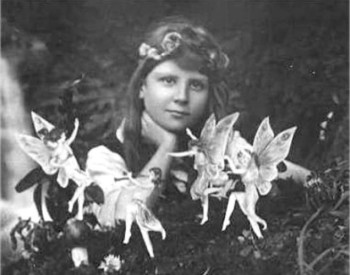 News flash: Sir Arthur Conan Doyle, having created literature’s greatest rationalist in the form of Sherlock Holmes, spent his later years heavily invested in the occult, the supernatural, and the possible existence of (yes) fairies.
News flash: Sir Arthur Conan Doyle, having created literature’s greatest rationalist in the form of Sherlock Holmes, spent his later years heavily invested in the occult, the supernatural, and the possible existence of (yes) fairies.
Of course, people have always evinced a desire to believe — sometimes in this, sometimes in that — and so it is perhaps not so surprising that Conan Doyle played a large role in one of history’s great photographic deceptions, that of the so-called Cottingley Fairies.
In fact, he was one of those most willing to champion the trumped-up, cheap-looking fakes (black and white stills of young girls posing in shrubbery with paper cut-outs of highly Romanticized winged fairies) His role in this debacle (the girls only recanted decades later) is the subject of a FairyTale: A True Story (1997), a film well worth revisiting given our drone-happy, GPS-driven, target-rich world.
You see where I’m going with this, yes? Given our present era of photo manipulation and computer generated graphics, our collective ability to dupe the unwary has never been greater, and just like statistics, images lie.
Now be warned: from here on, SPOILERS ABOUND. Fairy Tale is not a recent film, and in order to explore this topic, I’ll be giving away pretty much all of its crucial plot points. Hopefully you’ll be moved to see the film anyway, because for all its faults, it posits important, ultimate questions.
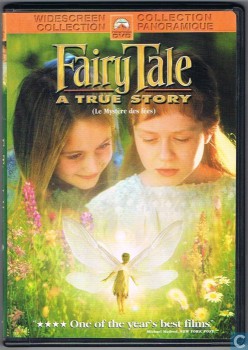 To begin with, what we appear to have is a sumptuous, reverent period piece, Downton Abbey with a curious title. The larger goal, however, is soon made clear. This film will explore a particular 1917 controversy, when Britain was suffering its way through the fag end of World War One. A nation badly in need of faith and healing, the England of that day and age. A nation badly shaken, and ripe for all manner of unlikely, transcendent claims.
To begin with, what we appear to have is a sumptuous, reverent period piece, Downton Abbey with a curious title. The larger goal, however, is soon made clear. This film will explore a particular 1917 controversy, when Britain was suffering its way through the fag end of World War One. A nation badly in need of faith and healing, the England of that day and age. A nation badly shaken, and ripe for all manner of unlikely, transcendent claims.
But in distant Cottingley, far from the madding crowd, two little girls, cousins, dwell in an old mill together with the parents of the older girl. Their great question in life is not how to repair Europe, but are there fairies down by the beck? Of course there are—they know this in the same way that most of us know the sun will rise tomorrow. The problem is the grown-ups. As one girl says to the other, “Grown-ups don’t know how to believe.”
So what we have here is not Downton Abbey at all, nor even Merchant Ivory, but a film that charges headlong toward Fox Mulder’s “I Want To Believe” UFO Poster. (The X-Files first aired in 1993, believe it or not.) Indeed, this would have made a fine case for Mulder and Scully’s skeptical forbears, if any.
Having only just set its nose to the grindstone, the movie tips its hand at about the ten-minute mark. A fairy, summoned perhaps by a childish chant, makes its appearance. Then comes a second, a miniature mer-creature hovering above a plunge pool beneath a bubble-brook waterfall.
But no problem, right? No muss, no fuss? Surely these fairies are strictly in the eyes of the two girls, and therefore allowable; this is a case of celluloid illustrating a subjective viewpoint.
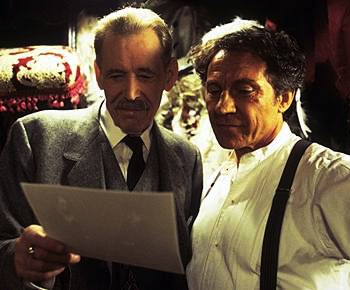 Wrong. Disastrously, FairyTale opts to depict the fairies independently of the two girls, thus granting them a tacit objective reality. In their way, cameras are the very subject of the story line, in that the two girls steal their father’s camera and record, like nascent anthropologists, the fay goings-on down in the neighboring sylvan wood. Except that what they’ve really done, as at least one of the girls admitted many years later, is hang a bunch of paper cut-outs in bushes, and photograph those.
Wrong. Disastrously, FairyTale opts to depict the fairies independently of the two girls, thus granting them a tacit objective reality. In their way, cameras are the very subject of the story line, in that the two girls steal their father’s camera and record, like nascent anthropologists, the fay goings-on down in the neighboring sylvan wood. Except that what they’ve really done, as at least one of the girls admitted many years later, is hang a bunch of paper cut-outs in bushes, and photograph those.
So the camera can lie — but the larger point is that in the language of cinema, that which is seen by the camera itself, when not clearly positioned as the viewpoint of a particular character, is “real.” That is to say, the camera performs as an independent observer, much like an author employing the third-person omniscient perspective in prose fiction. Thus, when the movie shows us fairies and the girls aren’t present anywhere in the scene, the film takes the position that these fairies actually exist.
Did director Charles Sturridge mean to do this? Is this what his screenwriters had in mind? For the life of me, I can’t tell. If not, it’s clumsy; if so, it’s wrong-headed. The movie cannot explore notions of supernatural belief and basic human faith while at the same time playing three-card monte with the evidence before us.
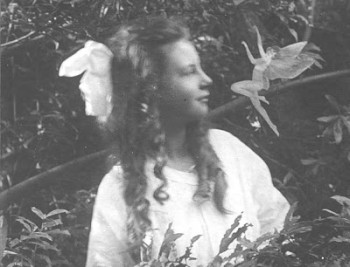 The sophistry continues. Here we have a film that knowingly employs the subtitle “A True Story,” thus daring viewers to give the proceedings extra credence—but surely all stories are true? Fiction exists (even those fictions that are morally or spiritually bankrupt) as do skeins of lies. To the degree that both are demonstrably real, both are also “true.”
The sophistry continues. Here we have a film that knowingly employs the subtitle “A True Story,” thus daring viewers to give the proceedings extra credence—but surely all stories are true? Fiction exists (even those fictions that are morally or spiritually bankrupt) as do skeins of lies. To the degree that both are demonstrably real, both are also “true.”
Aside from the girls, FairyTale relies on two real-life celebrities to dramatize its explorations of faith. (Not surprisingly, the film never takes on religion itself, except for Theosophy, a very soft target.) The first is Conan Doyle, gracefully underplayed by Peter O’Toole, an actor who knows better than most how to chew up the scenery. Also present is Harry Houdini (Harvey Keitel) as O’Toole’s principal foil. The stage is set: professional skeptic vs. romantic believer.
Thus the film becomes a war on two fronts, with the girls in Cottingley watching in fascinated alarm as their photos seep into the public eye, while Houdini, in London, demonstrates one breathtaking escape after another, insisting all the while, mostly to Conan Doyle, that each is but a clever ruse with a rational, real-world explanation. One cannot help but admire Conan Doyle, who prefers in his placid, gracious way, to take the path of the Lovin’ Spoonful and believe, wholeheartedly, in magic.
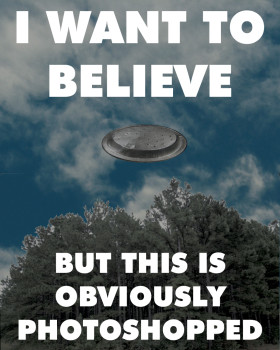 Can anyone blame him? Conan Doyle lost his son, Kingsley, in the Great War: a battle-wound that led to fatal pneumonia. He lost other family besides, and (in real life, referred to briefly in the film) worked with mediums and psychics to reach across the gulf of death and speak to them. Presented with the photographs of the fairies, and all the myriad possibilities those images represented, Conan Doyle declares this to the most important “discovery” of the century—outweighing, apparently, such wonders as antibiotics.
Can anyone blame him? Conan Doyle lost his son, Kingsley, in the Great War: a battle-wound that led to fatal pneumonia. He lost other family besides, and (in real life, referred to briefly in the film) worked with mediums and psychics to reach across the gulf of death and speak to them. Presented with the photographs of the fairies, and all the myriad possibilities those images represented, Conan Doyle declares this to the most important “discovery” of the century—outweighing, apparently, such wonders as antibiotics.
Prove it, says Keitel’s gentle, level-headed Houdini. Real fairies? How about more photographs? Reproducible evidence. O’Toole merely shrugs, as only O’Toole can (arms flexed out at the elbows, hands spread away from the body as if he’s a swan about to take flight). His smile seems to say, “But Harry. Kierkegaard wouldn’t have needed a photograph, now, would he?”
Such a leap of faith, these monochrome fairies. Why, then, show a beggar’s army of fairy-folk abandoning the bosky dells of Cottingley once tourists start showing up, armed with hunting dogs and butterfly nets? Once again, these fairies are depicted independently from the girls—or, indeed, from any human character—thus establishing them, cinematically, as indisputably real. To be frank, I doubt I can express what a fatal blow this is for this otherwise sweet and diverting story.
To return to my original theme, FairyTale makes a point of suggesting that anyone (Houdini especially) could manage a fake of just about anything, if only they put their mind to it. Houdini further posits that people never wish to be told they’ve been duped, or that their beliefs, whatever they are, have been built on deceptions and lies. To the older Cottingley girl, he says, “Masters of illusion never reveal their secrets.”
 But who now, in 2015, are the masters of illusion? What brand of illuminati have we allowed into our advertising firms, movie studios, and governmental palaces? Practical applications of FairyTale’s frauds abound. To pick but one real-world example, will Colin Powell someday recant those regrettable moments in front of a black and white photo of what were supposedly Iraqi weapons of mass destruction? Had he been shown FairyTale just before proceeding with that broadcast, and thought for a moment about the lessons of Cottingley, would he perhaps have altered course, or at least presented his case with less conviction?
But who now, in 2015, are the masters of illusion? What brand of illuminati have we allowed into our advertising firms, movie studios, and governmental palaces? Practical applications of FairyTale’s frauds abound. To pick but one real-world example, will Colin Powell someday recant those regrettable moments in front of a black and white photo of what were supposedly Iraqi weapons of mass destruction? Had he been shown FairyTale just before proceeding with that broadcast, and thought for a moment about the lessons of Cottingley, would he perhaps have altered course, or at least presented his case with less conviction?
I hope you, gentle reader, will take a moment to explore this frustrating work on your own. If you do, keep an eye out for a surprising last-minute cameo from Mel Gibson who, like Keitel, used FairyTale as a vehicle to showcase his milder, more temperate side.
Finally, I know you’ve been itching to ask: do I, Mark Rigney, ensconced here in Black Gate’s vast and outrageously high-tech Indiana compound, believe in fairies?
Um, well. I’ll cop to believing in the Lovin’ Spoonful. Good enough?
Onward.
Mark Rigney has published three stories in the Black Gate Online Fiction library: ”The Trade,” “The Find,” and “The Keystone.” Tangent called the tales “Reminiscent of the old sword & sorcery classics… once I started reading, I couldn’t stop. I highly recommend the complete trilogy.” In other work, Rigney is the author of “The Skates,” and its haunted sequels, “Sleeping Bear,” and Check-Out Time. A new novel, Bonesy, will be released Sept. 1, 2015. His website is markrigney.net.
 |
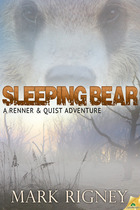 |
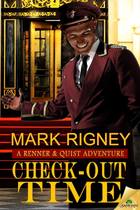 |
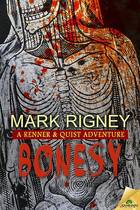 |
I have not seen this film but it reminds me of a similar experience watching “Bridge to Terabithia” with my daughter. She was ten and heavily into Narnia, Harry Potter etc. Knowing the story, I did not reveal to her about the tragedy at the end and she was duly shocked. By that time, I also was traumatised because the film makers did not want to rely on the human stuff but packed in a load of absurd fantasy episodes. I know, in the book, the fantasy play is mentioned but it is not elaborated upon. The emphasis is on the relationship between the two children and how they cope with the pressures of their peers and school life. It is unfortunate that the film makers saw that there was a hint of fantasy and proceeded to fashion scenes that seemed out of place and, in the end, I believe detracted from the strength of the film. Fantasy is a fascinating and challenging genre but there are occasions when reality does not need its help. Yes, my daughter accepted the fantasy and was shocked by the end of the film. Then she read the novel and ended it crying. Neil
Although somewhat understandable considering the current system of the easily manipulated human mind, a comparison of the two movies like this is completely Irrational and only goes to prove how unsound the mind is if modern man to discern the finer points of reality. The third eye blind ruin so much in the world today and steal so much from their children unwittingly. That is the true and unacceptable cost and loss Toni’s all.
In depth look, Mark. Along with ‘The Piltdown man’ controversy, not among Doyle’s shining moments.
NeilH – I continue to avoid the film version of TERABITHIA for the exact reasons you’ve mentioned. The filmmakers (at least according to reviews I’ve read, and now your comment) never understood their source material. Fantasy elements ought to be more than an excuse to employ fancy technology.
Bob – Thanks! And no, not among Doyle’s Greatest Hits. May history judge all of us more kindly.
[…] Image courtesy of “Black Gate“ […]
I am so saddened by this critique of fairy tale: a true story. Obviously the author of such blatant hedonism thinks far to highly and irrationally of his scientific viewpoints. One has to wonder what his take on the recently discovered ‘god’ particle is. Science and spirituality have finally collided and science has been proven wrong. What else can one say?